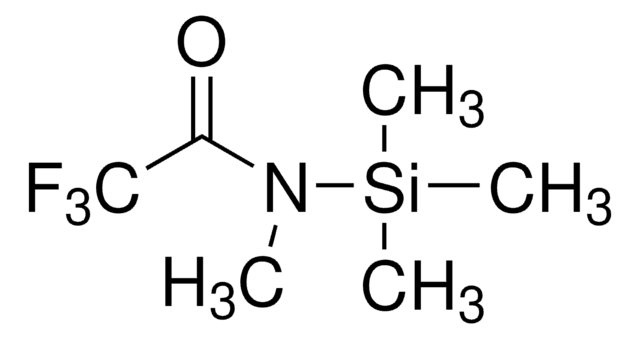Wichtige Dokumente
A1720
G 418
powder, non-animal origin, suitable for cell culture, BioReagent
Synonym(e):
Antibiotic G418
About This Item
Empfohlene Produkte
Produktbezeichnung
G 418, powder, BioReagent, suitable for cell culture
Produktlinie
BioReagent
Qualitätsniveau
Form
powder
Optische Aktivität
[α]/D (Specific Rotation: +104.4o (c=0.3% in H2O at 26oC))
Wirksamkeit
≥720 μg per mg (Dried basis)
Mol-Gew.
692.7
Verpackung
pkg of 1 g
pkg of 25 g
pkg of 5 g
Methode(n)
cell culture | mammalian: suitable
Farbe
white to off-white
Löslichkeit
H2O: 100 mg/mL (As a stock solution. Stock solutions should be stored at 2-8°C. Stable at 37°C for 8 days.)
Wirkungsspektrum von Antibiotika
Gram-negative bacteria
Wirkungsweise
protein synthesis | interferes
Lagertemp.
2-8°C
SMILES String
OS(O)(=O)=O.OS(O)(=O)=O.CN[C@H]1[C@H](O)[C@@H](OC[C@@]1(C)O)O[C@H]2[C@H](N)C[C@H](N)[C@@H](O[C@H]3O[C@H]([C@H](C)O)[C@@H](O)[C@H](O)[C@H]3N)[C@@H]2O
InChI
1S/C20H40N4O10.2H2O4S/c1-6(25)14-11(27)10(26)9(23)18(32-14)33-15-7(21)4-8(22)16(12(15)28)34-19-13(29)17(24-3)20(2,30)5-31-19;2*1-5(2,3)4/h6-19,24-30H,4-5,21-23H2,1-3H3;2*(H2,1,2,3,4)/t6?,7-,8+,9+,10+,11-,12-,13-,14+,15+,16-,17-,18+,19-,20+;;/m0../s1
InChIKey
UHEPSJJJMTWUCP-NKCAIAFTSA-N
Suchen Sie nach ähnlichen Produkten? Aufrufen Leitfaden zum Produktvergleich
Allgemeine Beschreibung
Anwendung
Biochem./physiol. Wirkung
Vorsicht
Angaben zur Herstellung
Sonstige Hinweise
Signalwort
Danger
H-Sätze
Gefahreneinstufungen
Resp. Sens. 1 - Skin Sens. 1
Lagerklassenschlüssel
11 - Combustible Solids
WGK
WGK 3
Persönliche Schutzausrüstung
Eyeshields, Gloves, type N95 (US)
Hier finden Sie alle aktuellen Versionen:
Besitzen Sie dieses Produkt bereits?
In der Dokumentenbibliothek finden Sie die Dokumentation zu den Produkten, die Sie kürzlich erworben haben.
Artikel
Antibiotic kill curve is a dose response experiment in which mammalian cells are subjected to increasing amounts of selection antibiotic
Protokolle
Stem Cell protocols for cryopreservation, thawing of cryopreserved stem cells and media preparation.
Unser Team von Wissenschaftlern verfügt über Erfahrung in allen Forschungsbereichen einschließlich Life Science, Materialwissenschaften, chemischer Synthese, Chromatographie, Analytik und vielen mehr..
Setzen Sie sich mit dem technischen Dienst in Verbindung.






